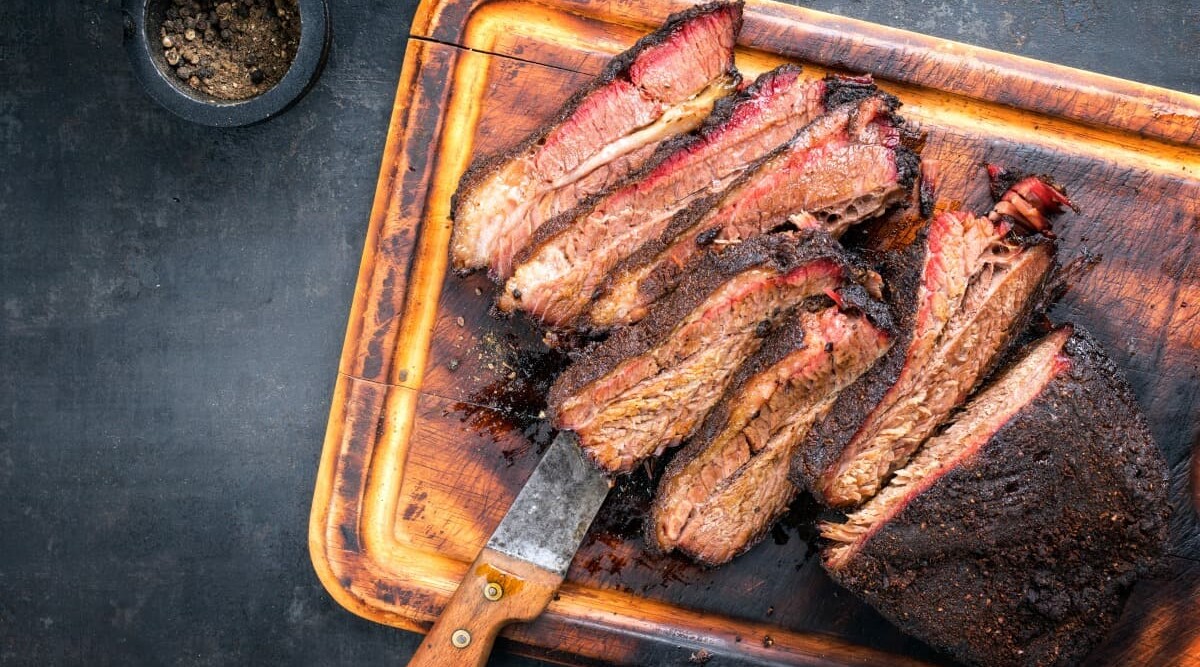
So, you think you’ve gone and grilled and smoked it all?
Maybe you dug your own fire pit and smoked a rack of ribs that would make Fred Flintstone jealous? Seared and rested a 2-inch USDA Prime steak to medium-rare perfection, and won awards for your homemade Chicago BBQ sauce?
Well, have you tried smoking a Wagyu brisket?
Yes, today’s tasty topic is Wagyu beef and Wagyu brisket. Is it really all it’s hyped up to be? For that matter, what is Wagyu beef?
We’ll sink our teeth deep into the subject to make clear what is, and what isn’t Wagyu, where it comes from, and why you want it on your menu.
Our journey begins on the other side of the world…
Jump to:
What Is Wagyu?
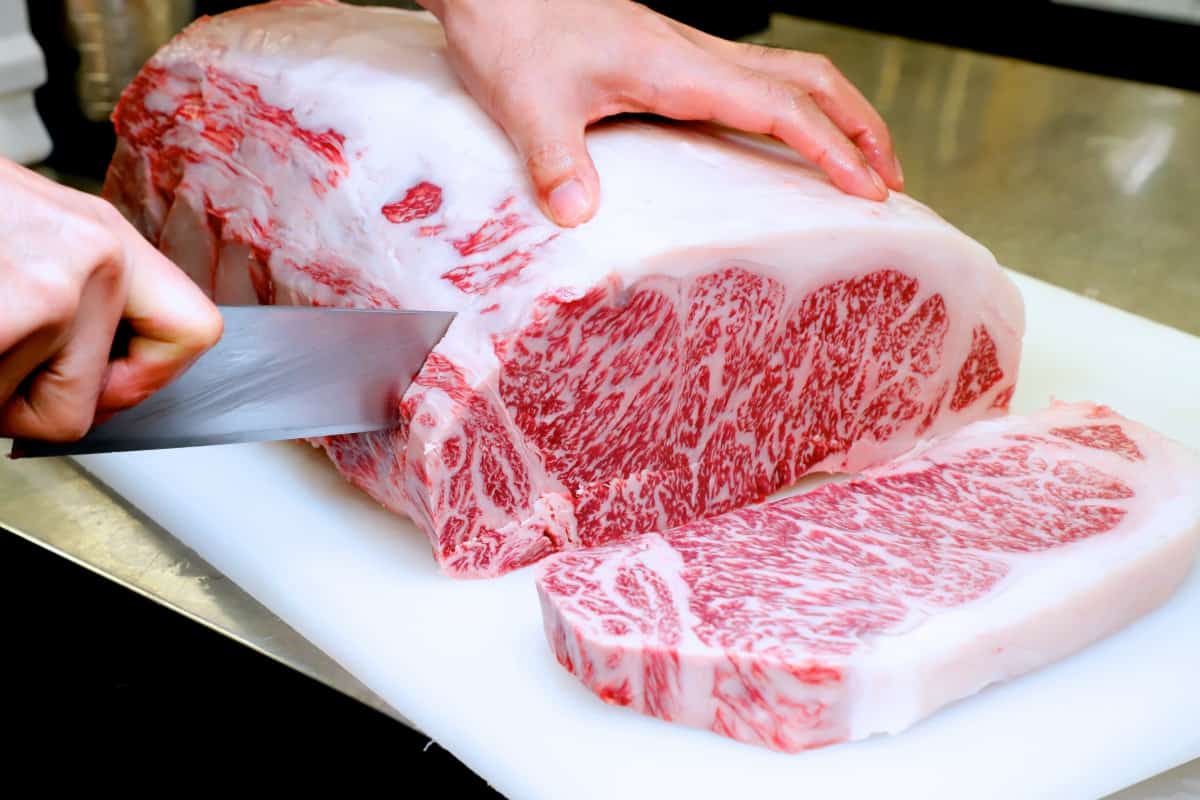
Maybe you’ve seen the name on a menu and not been sure what it is, and why it costs so much more than the other cuts?
Wagyu has so much prestige I’m surprised there aren’t commercials for it with Matthew McConaughey, or magazine ads featuring David Beckham.
So what is it? Let’s solve the mystery right now.
Wagyu is Japanese beef. That’s quite literally what it is — Wagyu is a composite word made up of Wa (Japanese) and Gyu (beef, or cattle).
History of Traditional Japanese Wagyu
According to the website for Wagyu International, cattle were first introduced to Japan by immigrants to the island between 500BC and 300AD.
The predominant religions in Japan, Shintoism and Buddhism, each forbade the consumption of beef. Cattle in Japan were traditionally used for labor — pulling carts, carrying heavy loads, etc. They were never raised in large numbers, but most families owned at least a few cattle.
These beasts of burden were well taken care of. They were sheltered during inclement weather and brushed and massaged regularly. Some lucky cattle were even offered sake during the warmest months.
It wasn’t until the 1860s that the consumption of beef became widespread in Japan. In 1868 a crossbreeding program began to increase the stature of Japanese cattle, and raise milk output. Breeds such as Brown Swiss, Devon, and Ayrshire were brought to the island and mixed with the local stock.
Over time, four distinct Japanese breeds emerged:
- Japanese Black
- Japanese Brown
- Japanese Poll
- Japanese Shorthorn.
Wagyu vs. Kobe
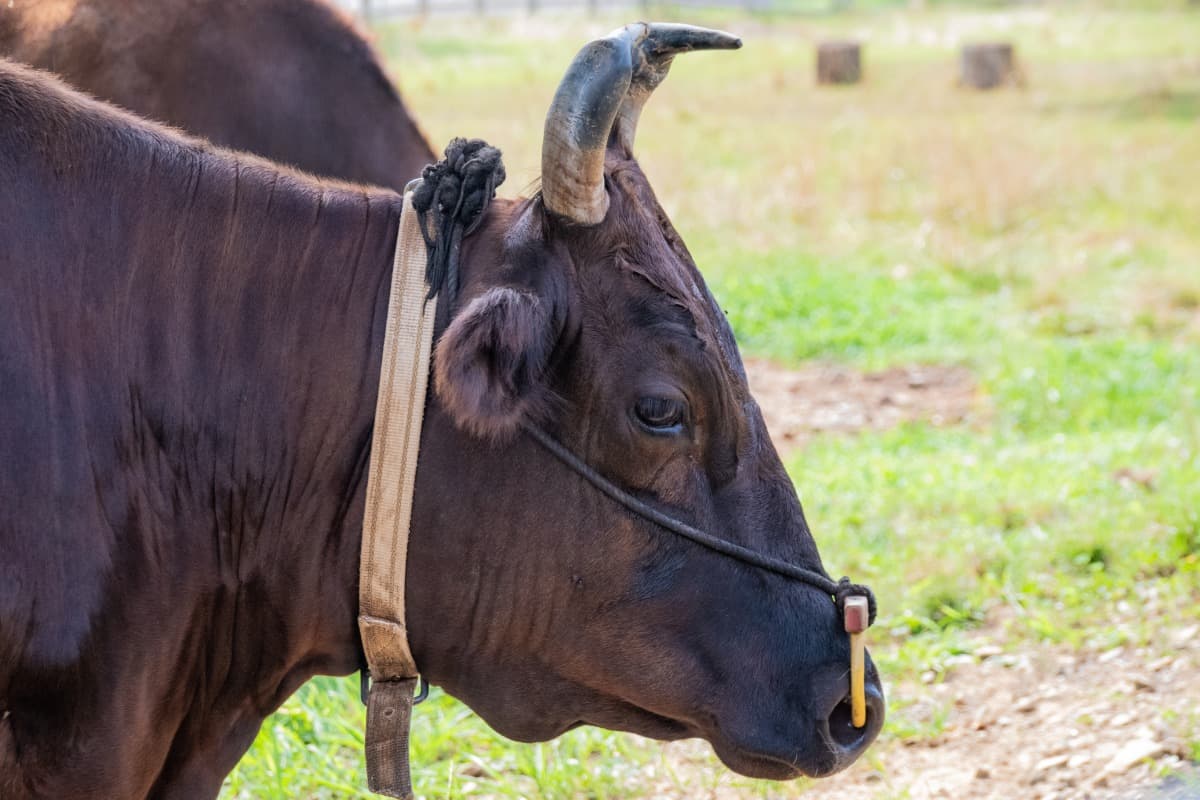
Around the time the Japanese first started eating beef, the port of Yokohama opened to foreign trade.
To help feed foreign appetites, beef was sent to the port from Kobe, the capital city of Hyogo prefecture. It was well-received and was dubbed Kobe Beef.
Today, the term “Kobe Beef” refers to wagyu bred in Hyogo. Furthermore, the Japanese government has set very specific restrictions on what can and cannot be labeled “Kobe Beef.”
First, the animal must be a purebred Tajima-gyu (a strain of Japanese Black), born, raised, and slaughtered in Hyogo. It must also score very highly in three different categories of Japanese beef grading for yield, meat quality, and marbling. Only then will it be stamped with the Japanese Chrysanthemum and assigned a tracking number.
Kobe cows are fed a very strict diet of dried forage and grasses, corn, barley, and other nutritious feed. This accounts, in part, for their exceptional quality.
True Kobe Beef — A trademarked term, along with “Kobe Meat” and “Kobe Cattle” — is rare and extremely expensive.
American Wagyu: Is It The Real Deal?
A few breeding pairs of Wagyu cattle were brought to the United States in 1975. Since then, the breed has spread to Canada, Australia, and a few other countries.
Beef from American Wagyu (and anywhere else it is raised) is sold domestically as Wagyu. This is by far the most common Wagyu sold outside Japan. In fact, between 2009-2012, it was the only Wagyu sold in the U.S., due to a ban on imports.
Whether American (or other foreign) Wagyu is genuinely Wagyu or not is a tricky question. It’s from the same lineage as Japanese Wagyu, production is tightly regulated and monitored for quality, and there’s no doubt the beef is excellent.
Raising non-indigenous livestock or crops is extremely common the world over. But I can’t think of any other instances where the foreign producers make little to no effort to differentiate their product from the original.
For example, a lot of good North American wine originated with plantings and grafts from established European grapes. However, no self-respecting vintner attempts to pass off his or her product as an Old World wine. They call out the name of the varietal, and proudly state where it was grown. That’s how regions like Napa and Niagara have made good names for themselves in the wine industry.
Some American Wagyu isn’t even 100% pure American Wagyu! Many breeders cross them with domestic breeds to increase the size of the cows and the cuts and the profits. They claim to produce American-size cuts, with Japanese marbling. Not trying to start a war, here, but I’m calling B.S. (beef steak) on that.
If you see “Wagyu” or “Kobe” on a menu anywhere outside of Japan, be highly skeptical, and don’t be afraid to question it. If the purveyor is at least honest that it’s domestic, and the price seems ok (it’ll be a premium, but shouldn’t be insane like Japanese Wagyu), by all means try it.
It isn’t real Wagyu, but it’s probably delicious anyway.
Meat Grading
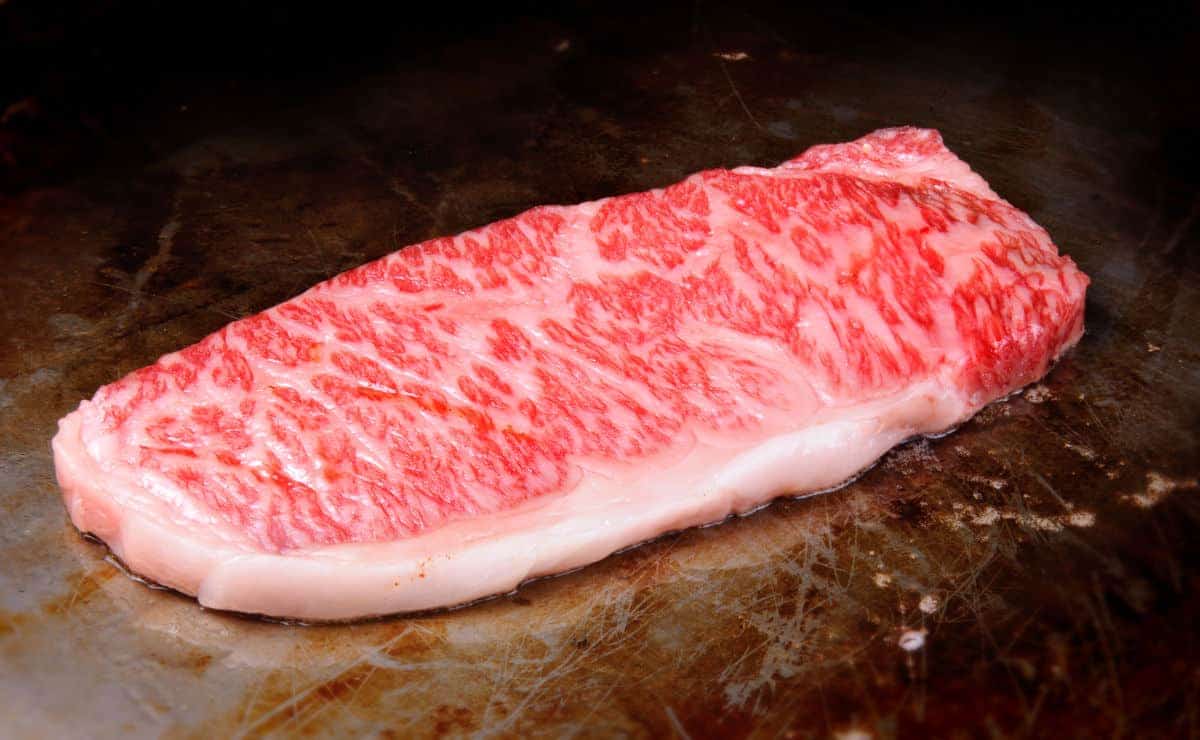
Japanese Wagyu is graded, of course, by the Japanese system. It’s a multifaceted assessment of the individual cut and the entire cow.
The cut itself is judged in 4 categories:
- Marbling
- Color and brightness
- Firmness and texture
- Fat color, luster, and quality.
Each category gets a rating from 1 to 5, one being poor quality, and 5 being outstanding.
The categories with sub-categories get a rating for each that are then distilled into a single number. The resulting numbers are further condensed to a single numerical ranking from 1 to 5, that number being the lowest number from the group of 4.
A letter grade from A to C is given as a ranking of yield. Without going into a ton of math and detail, yield is based on specific measurements of meat quantity on the cow. An A ranking is above standard, B is standard, and C is below standard.
The final grade combines the letter and the number. A5 is the holy grail of Wagyu and will absolutely cost a fortune. A4 and A3 are more common in good Japanese restaurants. C1 is probably not fit for dog food.
A Note On Marbling
Unlike the other subcategories, there are 12 possible marbling scores. This score is based on a visual inspection of the cut and comparison to an established standard.
When purchasing Wagyu, pay close attention to the marbling number. The higher it is, the better — assuming you like a lot of marbling!
Because of the way the system is set up, a really nicely marbled cut could score a disproportionately low ranking if another subcategory was found lacking.
Cuts of Wagyu
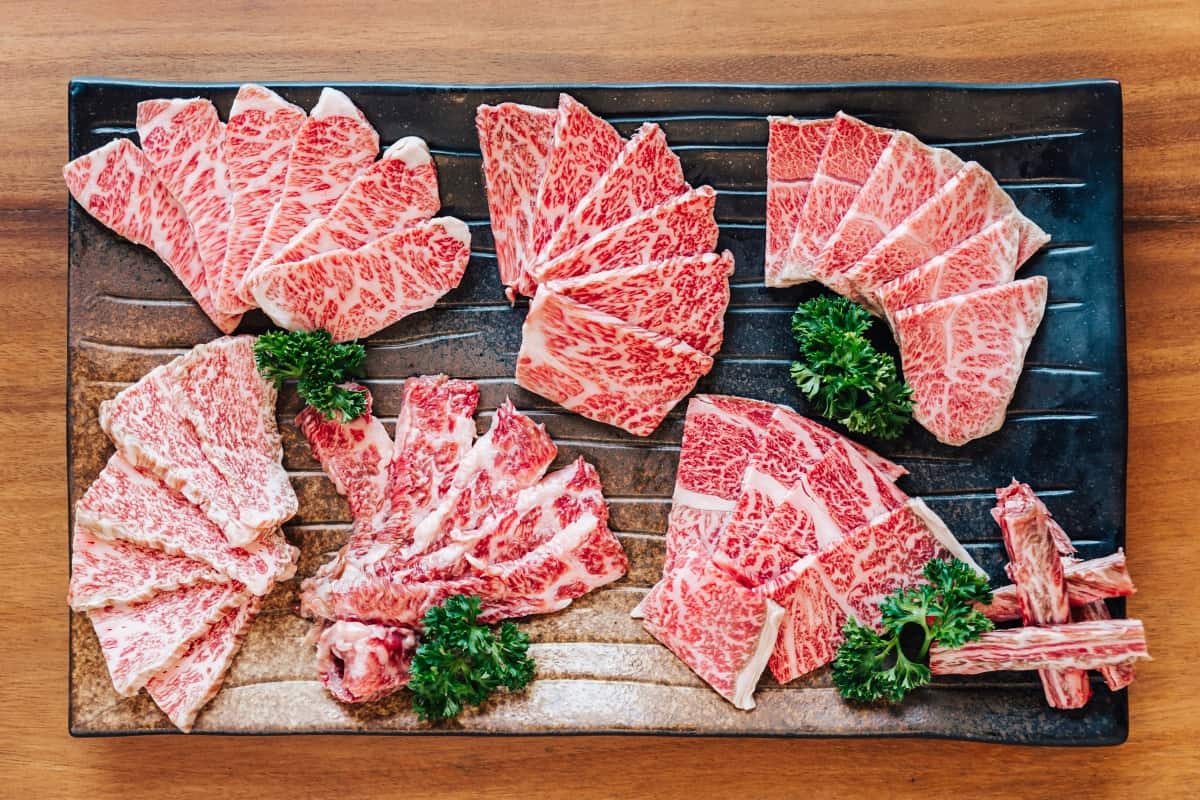
Wagyu and Kobe are not cuts. They are a variety and sub-variety (for lack of a better word) of beef cattle, respectively.
As with any kind of beef, there are many cuts to choose from. Actually, there are a staggering number of cuts available. The Japanese really embrace a nose-to-tail philosophy of butchering that hasn’t entirely caught on in the western world.
One Tokyo restaurant, Yakiniku Shokunin, lists 29 cuts on its website, though I don’t know for sure if they serve them all. They range from sirloin, brisket, and top round to diaphragm, womb, and all 4 stomachs.
Some of these cuts will be served in manners familiar to most western diners. The more exotic cuts (to our minds) might be served as sashimi (raw), or grilled on skewers called yakitori.
Among the more popular cuts at Yakiniku (bite-size barbecue) restaurants are:
- Gyutan — tongue
- Karubi — boneless short rib
- Misuji — oyster blade
- Jo-rosu — chuck roll
- Harami — skirt steak
- Sirloin
Notes On Wagyu Brisket
In the competition barbecue circuits, Wagyu brisket is sometimes trotted out as a secret weapon. The extra marbling can sometimes be the difference between a “Thanks for coming,” and a, “here’s your trophy!”
Most of the Wagyu brisket used in competition (and available for purchase for home cooking) is of the American variety. It’s very good stuff, and usually a cut above a typical fully domestic brisket. And that’s in terms of quality and cost! (A 15-pound American Wagyu brisket could easily set you back $150 U.S.)
If you do happen to try one, allow extra time to cook. With all the marbling, it takes longer to render the fat.
True Japanese Wagyu brisket is very rare, indeed. So rare, that I found almost no references to it anywhere online.
I read a single article about a lucky chef who had the chance to cook and eat a genuine Japanese A5 Wagyu brisket. He declared it superior even to the best Certified Angus Beef brisket, the benchmark for beef quality in the western world.
I can’t even imagine what that cost, or how good it must have been. Most of us will never know.
How to Cook and Serve Wagyu
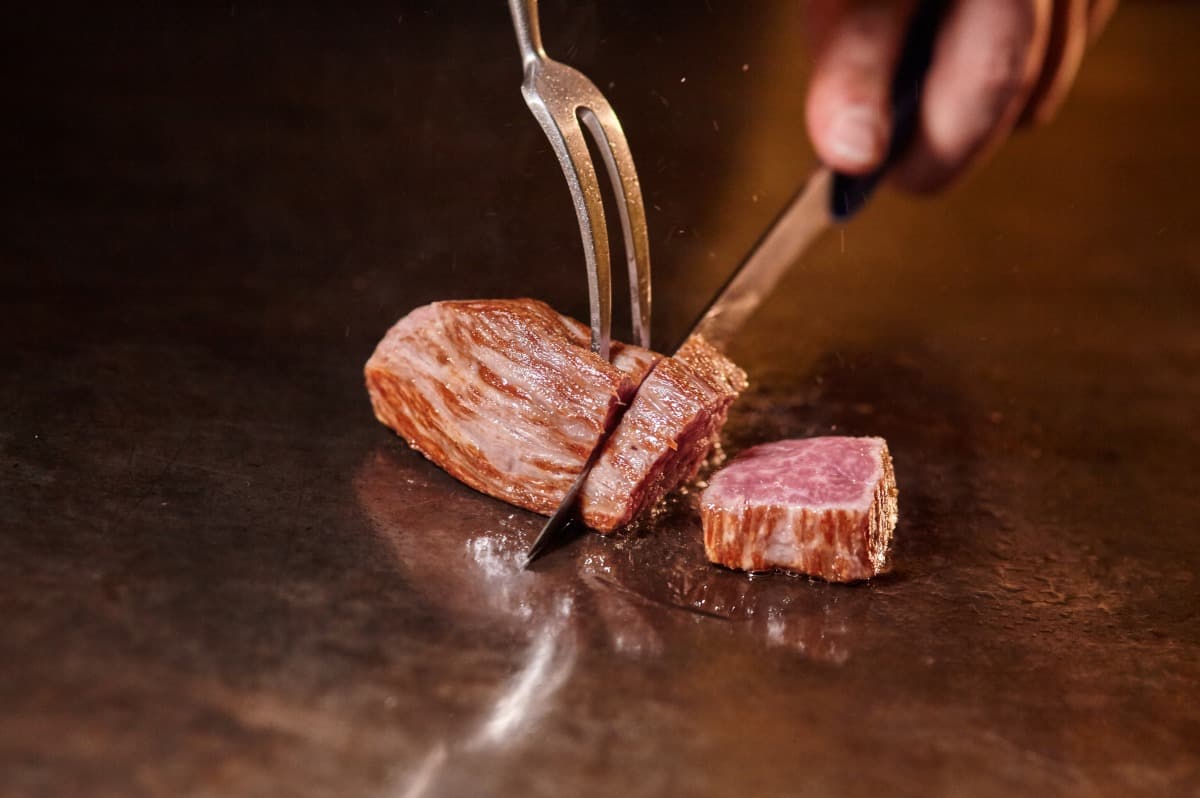
The Japanese take a vastly different approach to preparing beef than westerners. If you go into a restaurant in Tokyo expecting to order a big, thick Wagyu steak, you may be disappointed.
Whereas the typical American approach to barbecue is huge honking hunks of beef (and I am not saying there is anything wrong with a thick and juicy steak!), in Japan they like to slice it thin. Must be because of amazing knives.
If you want big ol’ Wagyu steak, you should probably check stateside, or in any large western city. Mind you, big by Wagyu standards will probably be something like 6 ounces. Few could afford more than that!
As I said, in Japan, Wagyu is cut into thin slices and grilled. It’s phenomenally rich and tender with mouthfeel you can’t even describe.
Wagyu is usually cooked rare to medium rare. Any more than that and you’ll lose the benefit of all that epic marbling.
Seasoning is minimal, generally just small amounts of garlic and salt, though I saw one American restaurant recipe that used thyme, as well. Personally, I think the approach should be one of enhancing the flavor, rather than adding to it.
Dipping sauces are very popular with Japanese beef, though again I’d go easy on it. This stuff is too tasty and expensive to slather it with A1 or HP!
Classic Japanese sauces known as tare are usually soy sauce-based and tend to be sweet. Other typical ingredients include sake, sugar, garlic, and sesame.
How you choose to enjoy your Wagyu if you grill it at home is entirely up to you. There’s a lot to be said for decadently sinking your teeth into an expensive steak. On the other hand, it’s Japanese beef; why not eat it the way the Japanese do to get the genuine experience?
Is Wagyu Worth the Cost?
That’s about as subjective a question as you’re likely to see today.
While thinking of an answer I thought about something someone once told me about collectibles — they’re only “worth” what someone is willing to pay. So, are you willing to pony up for a meal of Wagyu?
True Japanese Wagyu is very expensive for just a small cut, even in Japan. If you find it in your home country (and you’re not Japanese), and it’s genuine, it will be very, very expensive. As an example (admittedly an extreme one) I found a Wagyu tenderloin selling online for nearly $1200.
(Caveat emptor: be very careful when buying Wagyu. Ask questions, demand answers, know what you’re getting, and don’t overpay for phony baloney.)
While some people are absolutely blown away by Wagyu, others come away disappointed. Every food can be like that.
If you’re a true steak and barbecue aficionado, you owe it to yourself to try it once, anyway. Seek out the most authentic Wagyu you can and go for it. Then you can decide if it was worth it, and if it’s worth doing again.
Sayonara
Ah, Wagyu — desired by many, but tasted by few.
We hope this article has answered your questions about this near-legendary meat. You should now know what to look for and what questions to ask at the butcher and the steakhouse. Buy with confidence!
Thanks for choosing us as your source for information on Wagyu and other barbecuing, smoking, grilling, and general cooking-with-fire topics. If you like what you read here, be sure and share it with a friend.
Since you’re so kind as to read what we have to say, we want to return the favor! If you’ve got the notion, tap out a message for us and let us know what you think about this article, or any other article on our site. Share your barbecue triumphs and failures with us, too!
See you ‘round the pit. Wagyu going to grill next?!



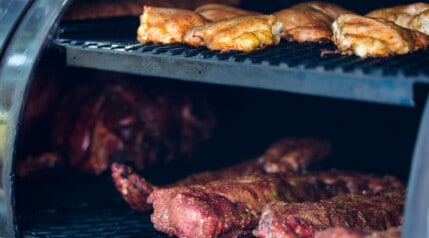

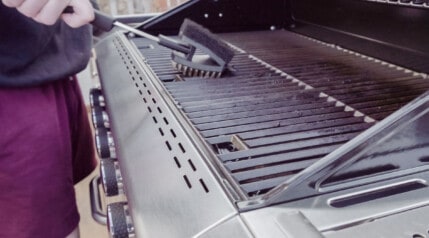
Tips on smoking a waygu brisket on pellet smoker? Time? Wrap? Temp? Rub? Thank you. Rich
Hi Richard,
We have articles covering these things. Please use the search bar top of the site, enter ‘brisket’ and the results will show everything we have on brisket and should answer your questions.
Your exploration of Wagyu beef is both informative and inspiring. The depth of flavor and unmatched tenderness of Wagyu brisket truly make it a gourmet delight. Your article skillfully captures the essence of what makes Wagyu so exceptional and provides valuable insights for any BBQ enthusiast. A sizzling read that’s left me craving a savory Wagyu experience! 🥩🔥👏